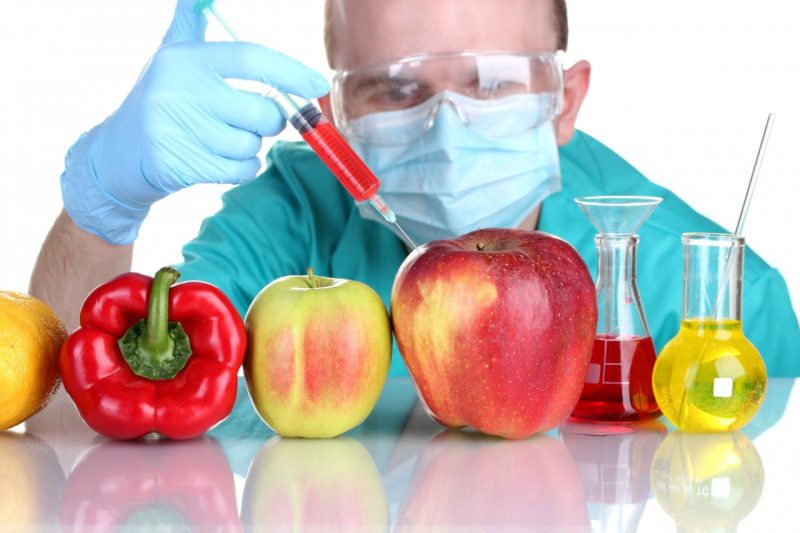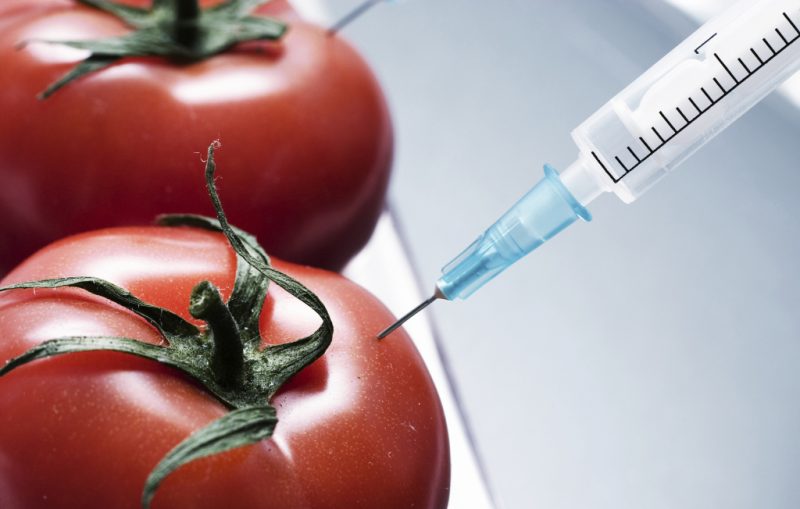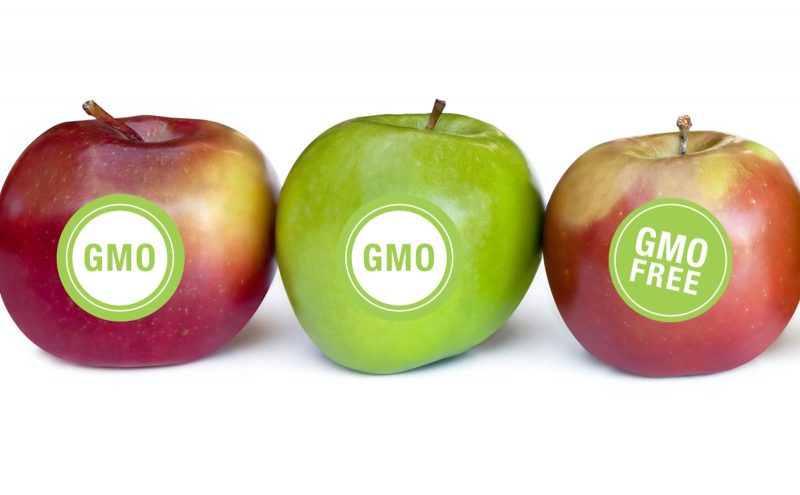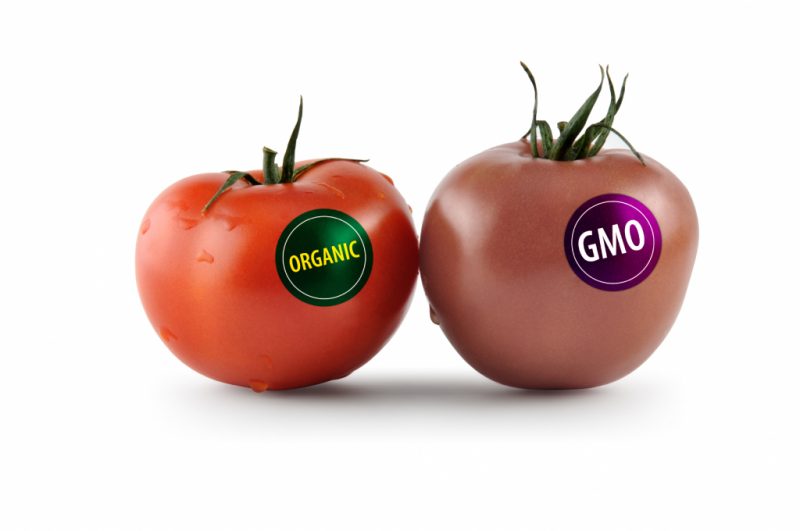The development and use of genetic engineering methods has led to the emergence of an obscure abbreviation - GMOs - in the composition of many familiar foods. Most consumers are not very well aware of what GMOs are and doubt the appropriateness of such additives.
How our use of products containing GMOs is reflected in human health, and what role genetic resources play in agriculture and the food industry, our experts will tell.
Material Content:
What is GMO - abbreviation decoding
The correct interpretation of the abbreviation GMO is a genetically modified organism. This means that the totality of DNA sections that store important hereditary information was artificially altered by introducing genes from other organisms.

Initially, the task of genetic engineering was to create new species of organisms with improved characteristics.
The object for applying genetic engineering methods can be not only plants and animals, but also microorganisms. However, the most common are genetically modified plants.
On the one hand, the transfer of genes that are responsible for useful characteristics is regarded as a necessary component of selection. Thanks to genetic engineering, plants appeared that are resistant to pesticides harmful to humans, as well as insects and viruses.

In some plant samples, it was thus possible to improve the quality of the composition - vitamins and trace elements.
Some varieties of potato, corn, wheat, cotton, soy, table and sugar beets, as well as zucchini, carrots, onions, tomatoes and rice, underwent modifications.
Although the harm or benefits of GMOs has not yet been adequately studied, many scientists around the world have opposed genetically modified foods, believing that they conceal a threat to human health.
To date, accurate data on the dangers of human use of GMOs do not exist. Nevertheless, many advanced countries of the world have already abandoned the use of modified products.
What genetic engineering gives
The active use of genetic engineering methods is also due to the theory of depletion of food stocks and hunger threatening humanity. From this point of view, the use of GMOs is not only permissible, but also justified, since it is really a real opportunity to increase productivity and feed billions of people.

Changes in the genetic code of plants affect their final properties and characteristics.
Most genetically modified plants acquire completely new abilities:
- resistance to adverse climate;
- undemanding to the composition of the soil;
- independence from the presence of sufficient moisture and light;
- the ability to resist pests and weeds;
- fast ripening and high productivity;
- shelf life;
- improved taste;
- increased nutritional value.
In addition, many doctors see in GMOs new promising opportunities for the development of medicine - the development of vaccines, the production of insulin, and the fight against old age.
The leading position in the use of GMOs in food is taken by American companies.
Decoding GMO labels on food
So that buyers can get reliable information about the origin and composition of products, manufacturers label consumer and transport packaging.

According to the requirements of technical regulations, product labeling should contain textual or graphic information about the presence of GMOs. However, special labeling for modified products does not currently exist.

The Law "Consumer Protection" provides for the inscription "Does not contain GMOs" on products that do not include genetically modified substances.
GMOs in products
Many foreign manufacturers use cheap transgenic components to make products that are exported to Russia.

There are four categories of such products:
- genetically modified ingredients used for tinting, sweetening and maintaining product structure;
- as a result of processing transgenic raw materials, soy milk and cottage cheese, corn flour and cereal, popcorn and chips, tomato pastes and crackers, as well as baby food are obtained;
- fruits and vegetables - apples, grapes, tomatoes and even dried fruits, which are coated with modified oil to increase the shelf life;
- finished products and semi-finished products created with the addition of modified raw materials - frozen pancakes, dumplings, dumplings and pasties, various sauces and ketchups, sausages and chocolate products, cookies, condensed milk, carbonated drinks.
Imported products, in which GMOs are completely absent, contain markers with the word “Organic”. A sticker with the crossed-out word “GMO” or the words “Non-GMO” or “Non-GMO” cannot guarantee the complete absence of transgenic components. As a rule, such products contain up to 1% of GMOs.
In addition, GMOs may be hidden behind the names of food additives with an index E.
Labeling American products provides for the indication of a special code in which the first number 8 indicates the presence of GMO in the product.
In Russia, the cultivation and use of GMOs is allowed only as an object for research. Along with this, the sale of products with GMOs is not prohibited.
The impact of GMOs on human health: benefits and harms
In order to determine the degree of impact of GMOs on human health, years of research and experimentation are needed.
At the moment, it is obvious only that the use of transgenes is economically advantageous, since it allows you to reduce the cost of the cost of most types of products. There is no reason to talk about any benefits of GMOs for humans. While some of the harmful effects of consuming products containing modified components have already been recorded, and more than once.
Possible harm to GMOs
Analyzing the pros and cons of GMOs, it is worth noting some potentially dangerous aspects of their use. Scientists were the first to sound the alarm. In their opinion, prolonged use of products with a modified gene can lead to the appearance of new genes in the human genome.

In addition, it is believed that GMOs:
- contribute to the development of allergic reactions;
- affect the susceptibility of the body to the effects of medicines, in particular antibiotics, making it difficult to treat bacterial diseases;
- according to the results of some studies, can cause infertility and the development of tumor processes;
- provoke the accumulation of toxins in the human body.
And last but not least, the complete safety of the use of GMOs continues to be unproven. The appearance of toxic proteins and mutant compounds in transgenes is often observed. So, the likelihood of a health threat that scientists are warning about does exist.
The difference between these products from genetically modified
Laboratory methods are not suitable for identifying modified substances in any products. The only way to choose natural products in modern supermarkets is to pay attention to the significant differences between non-GMO products and their additives.

First of all, it is worth evaluating the appearance of fruits and vegetables. Natural products are distinguished by the presence of natural shades and smell, although they are not always distinguished by a good presentation. While transgenic engineering products look perfect - a bright, saturated uniform color, a shiny surface without damage and at the same time almost complete absence of natural odor.
Such vegetables and fruits retain freshness for a long time and rarely deteriorate.
In addition, almost all products that are grown or produced in America and Asia, and contain soy, corn and potato starch, can be considered the result of the development of geneticists.
GOST for the presence of GMOs
In order to resolve issues related to the production and distribution of genetically modified products, an interstate GOST was introduced in Russia.

According to the new established standards, the presence or absence of transgenic components in any product is determined by using special methods.
Timely identification of GMOs in products of plant origin, products containing plant components, and food raw materials provides a high level of biological safety and allows consumers to get complete information about the purchased product.
In other words, the presence on the packaging of the marking GOST R 57022−2016 is evidence of the natural origin of the product and the complete absence of GMOs in its composition.
Undoubtedly, a great future awaits genetic engineering - first of all, in the field of medicine. I would like to believe that the world scientific community will find the opportunity to objectively, and not for the sake of the interests of food transcription, evaluate the pros and cons of using GMOs.












